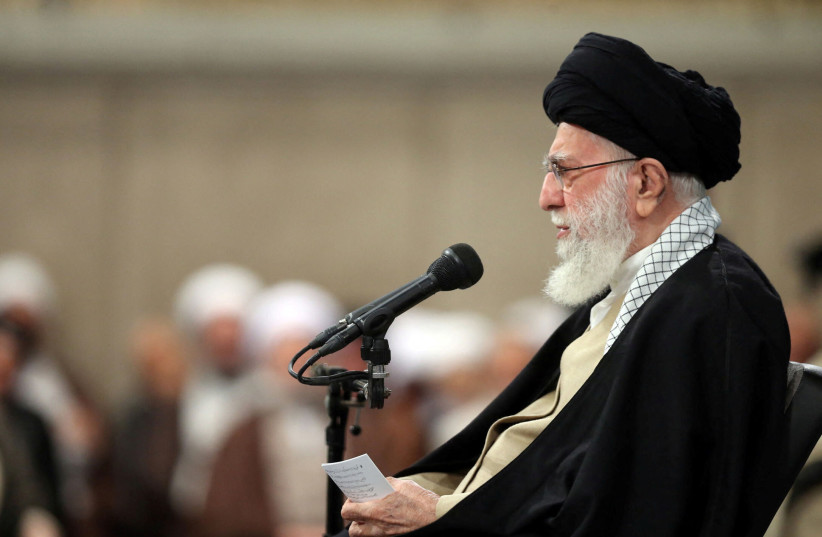“Our enemies” – said Alexander the Great of the Persians – “have lived soft and luxurious lives,” whereas his troops “have been trained in the hard school of danger and war.”
Now, 45 years after the Khomeini Revolution, the Persians are the ones whose lives are hard rather than soft, and wretched rather than luxurious.
Misreading Western civilization and their own people’s misery, Iran’s leaders are steadily leading their sorry nation into an all-out confrontation with the rich world. The mullahs’ aim is by now clear: regional domination today, religious triumph tomorrow.
The questions therefore are not whether, but when, the violence the ayatollahs continuously kindle will spin out of their control; and not how, but where, the war they demand should be fought; and not what, but who, will hand them their ultimate defeat.
And the answer is that when the war Tehran is provoking arrives, the preemptive attack should be waged only from afar because Iran’s defeat must come from within.

The killing of three American troops this week in Jordan by Iranian-sponsored warriors was a display of new audacity, but in itself was not a casus belli. That statement was made at sea, where attacks on commercial shipping entering the Red Sea shrank its traffic by 60%, from 500,000 containers in October to 200,000 in December.
The Houthi attacks on international shipping are clearly not their idea. Waged on both flanks of the Bab el Mandeb Straits, in the Red Sea to its north, and the Indian Ocean to its east, they are Tehran’s design and responsibility, and they constitute a declaration of war.
Iran’s bellicosity, which in 2019 resulted in a massive drone attack on major Saudi oil installations, is steadily expanding, now reaching even Pakistan, where Iran fired this month missiles on what it says were anti-Iranian insurgents from the Baluchi minority.
The West’s response so far to Iran’s geopolitical aggression has been measured – aerial attacks in Yemen and redoubled sanctions – but this clearly will not temper Tehran’s bellicosity. Iran’s current leaders are even more adventurous than their predecessors. One way or another, they will ultimately get the full-scale war they are steadily begging. How, then, should that war be fought?
How should the West fight Iran?
CONTAINING IRAN will require a preemptive strike guided by three principles. The first is: “Don’t invade.”
Iran is big. More than twice the size of France, it has six cities of more than a million inhabitants each. Tehran, with nearly nine million, is more populous than Chicago. The overall population, at 84 million, equals those of California, Texas, and Florida put together.
Diving headlong into this crowded humanity and dense urbanity would be foolhardy. Uniformed invaders climbing Iranian shores, patrolling its alleys and roaming its bazaars, would quickly meet suicidal guerrillas, and help the regime shift attention from the causes of foreign invasion to its costs.
That is why the attack’s second principle should be: “Target the regime.”
The regime comprises the people who run the Islamic republic: ministers, governors, clergy, lawmakers, and mayors. Their tools are the military, police, secret services, and those who run them.
To be effective, the attack will have to open with targeted killings of key figures in Iran’s foreign belligerency and domestic oppression. This will be the clandestine part of the war, which will be complex and demand very detailed preparation.
The attack’s other part, the conventional assault, will be geographically broader, but militarily simpler. Its first targets will be the Iranian navy and air force which, while sizable, are relatively antiquated, including American Phantom jets from the 1970s and Soviet Kilo-class submarines from the 1980s.
These should be no match for Western militaries. If properly prepared and led to this showdown, American and European air forces and navies should be able to destroy Iran’s navy and air force within a few weeks.
Concerning the ground forces, the aim should be to hit any vehicle that might help the regime survive. That means an estimated 2,400 battle tanks, 3,200 artillery barrels, and some 4,500 armored personnel carriers, all of which can be targeted from the air.
These initial blows will be crucial not because of the Iranian ground forces’ abilities, but because of their decimation’s psychological effect.
Where Iran’s firepower is a serious threat is its arsenal of missiles, rockets, and drones, many of which will be lobbed at Israel.
Assuming these weapons’ whereabouts are generally known, they will be prime targets from the war’s first minute. That’s why the speed and efficiency with which they are disabled will largely determine the war’s length and success.
Dramatic though it will be, that part of the military showdown will dwarf compared with an anti-Iranian attack’s third guiding principle, which should be: “Harness the population.”
THE MILLIONS of Iranians who feel their country has been hijacked should be convinced they can safely take to the streets and confront the regime. This is achievable.
The Basij anti-riot police can be disabled in a few hours, during which its bases will be leveled and the motorcycles from which they bludgeon protesters will be torched. Similarly, the watchtowers, fences, and gates of the jails in which thousands of innocent Iranians are imprisoned should be smashed, along with the barracks where their wardens nest.
The external military attack will thus be joined by a popular uprising from within, and so pave the way for the Iranian nation’s victory and its tormentors’ defeat.
www.MiddleIsrael.net
The writer, a Hartman Institute fellow, is the author of the bestselling Mitzad Ha’ivelet Ha’yehudi (The Jewish March of Folly, Yediot Sefarim, 2019), a revisionist history of the Jewish people’s political leadership.

